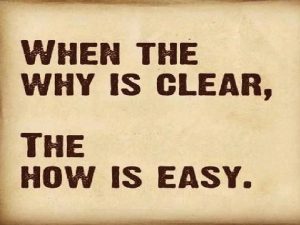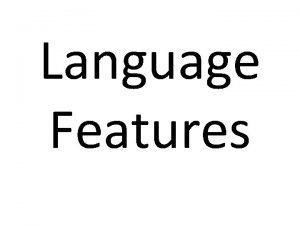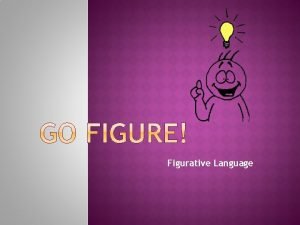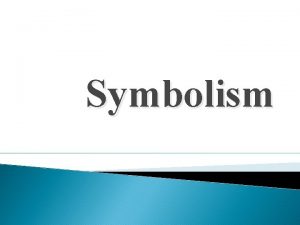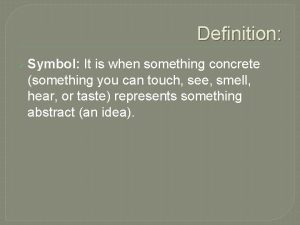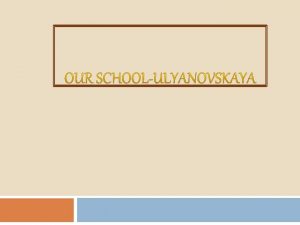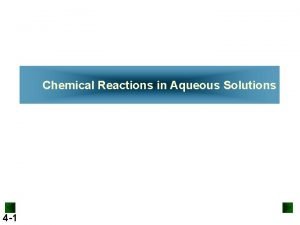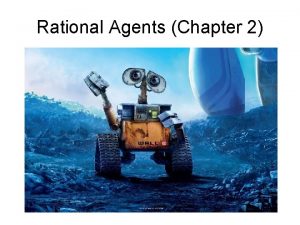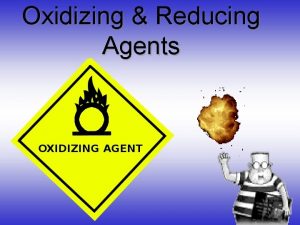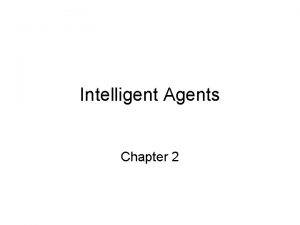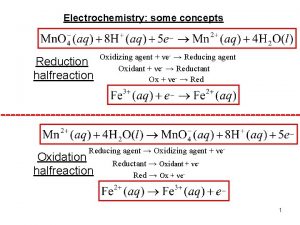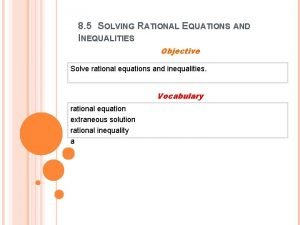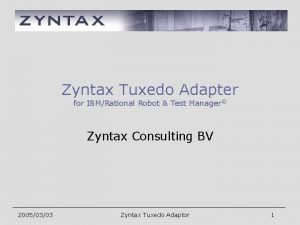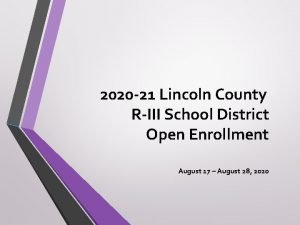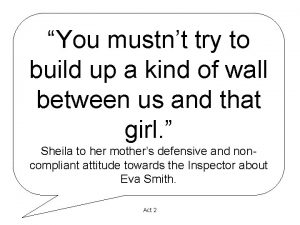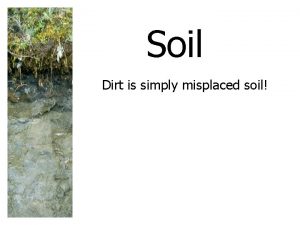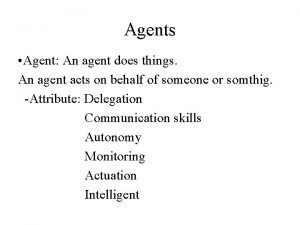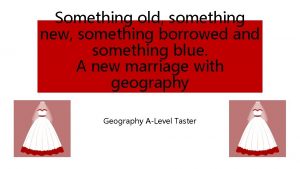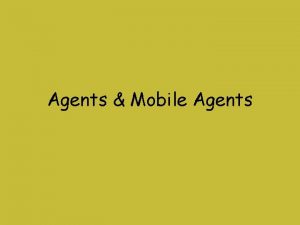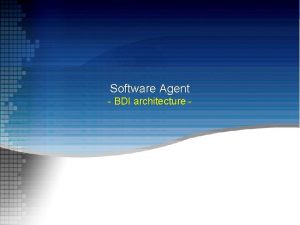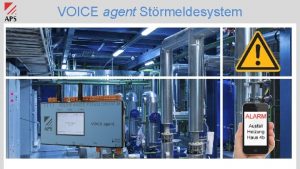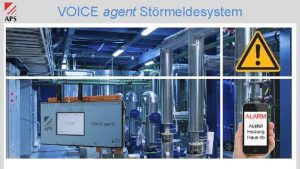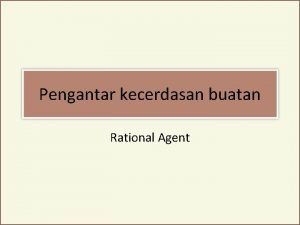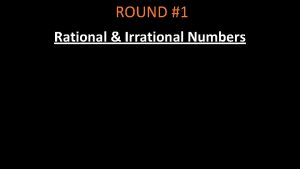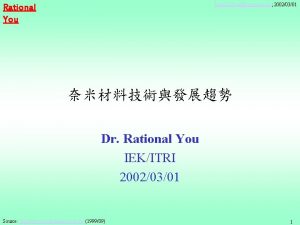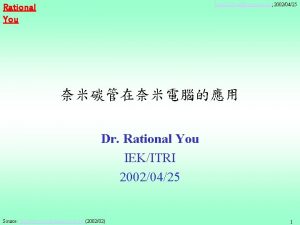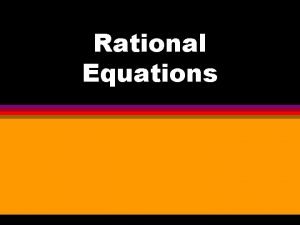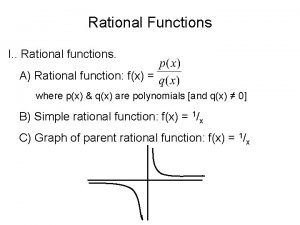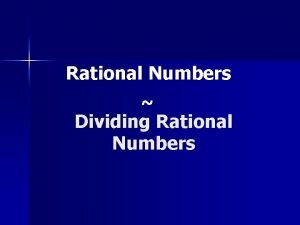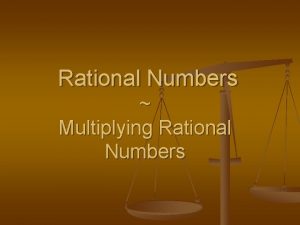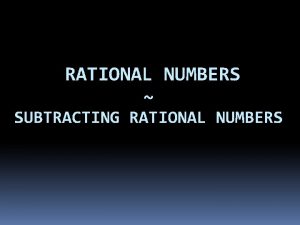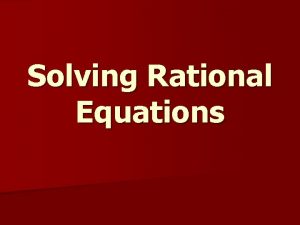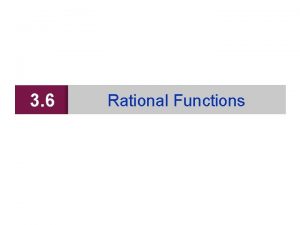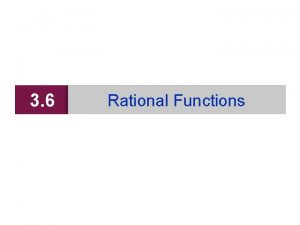Rational Agents An agent is simply something that






























- Slides: 30

Rational Agents • “An agent is simply something that acts. ” • An agent is an entity that is capable of perceiving its environment (through sensors) and responding appropriately to it (through actuators). 1

Rational Agents • If the agent is intelligent, it should be able to weigh alternatives. • “A rational agent is one that acts so as to achieve the best outcome or, when there is uncertainty, the best expected outcome. ” 2

Rational Agents • An agent should be able to derive new information from data by applying sound logical rules. • It should possess extensive knowledge in the domain where it is expected to solve problems. 3

Agents Act in Environments

Agents Act in Environments • Agents include humans, robots, softbots, thermostats, etc. • The agent function maps from percept histories to actions: • The agent program runs on the physical architecture to produce

Rationality • Rational agent definition: “For each possible percept sequence, a rational agent should select an action that is expected to maximize its performance measure, given the evidence provided by the percept sequence and whatever builtin knowledge the agent has. ”

Rationality • Rationality is not – Omniscience – Clairvoyance – Success

Inputs to an Agent • Abilities — the set of possible actions it can perform • Goals/Preferences — what it wants, its desires, its values, . . . • Prior Knowledge — what it comes into being knowing, what it doesn’t get from experience, . . . • History of stimuli • (current) stimuli — what it receives from environment now (observations, percepts) • past experiences — what it has received in the past

Four Example Application Domains • Autonomous delivery robot roams around an office environment and delivers coffee, parcels, . . . • Diagnostic assistant helps a human troubleshoot problems and suggests repairs or treatments. E. g. , electrical problems, medical diagnosis. • Intelligent tutoring system teaches students in some subject area. • Trading agent buys goods and services on your behalf.


What does the Delivery Robot need to do? • Determine where Craig’s office is. Where coffee is… • Find a path between locations. • Plan how to carry out multiple tasks. • Make default assumptions about where Craig is. • Make tradeoffs under uncertainty: should it go near the stairs? • Learn from experience. • Sense the world, avoid obstacles, pickup and put down coffee.

Share your thoughts • Add your ideas to the group brainstorm document: • Bit. ly/Purple. Brain 1

Example Responses Delivery Robot • Abilities: movement, speech, pickup and place objects. • Prior knowledge: its capabilities, objects it may encounter, maps. • Past experience: which actions are useful and when, what objects are there, how its actions affect its position. • Goals: what it needs to deliver and when, tradeoffs between acting quickly and acting safely. • Observations: about its environment from cameras, sonar, sound, laser range finders, or keyboards.

Diagnostic System • Intended to advise a human about some particular system such as a medical patient, the electrical system in a house, or an automobile. • Should advise about potential underlying faults or diseases, what tests to carry out, and what treatment to prescribe. • To give such advice, the assistant requires a model of the system, including knowledge of potential causes, available tests, and available treatments, and observations of the system (which are often called symptoms).

Diagnostic System

What should a Diagnostic System do? • Derive the effects of faults and interventions. • Search through the space of possible fault complexes. Explain its reasoning to the human who is using it. • Derive possible causes for symptoms; rule out other causes. • Plan courses of tests and treatments to address the problems. • Reason about the uncertainties/ambiguities given symptoms. • Trade off alternate courses of action. • Learn what symptoms are associated with faults, the effects of treatments, and the accuracy of tests.

Example Responses Diagnostic System • Abilities: recommends fixes, ask questions. • Prior knowledge: how switches and lights work, how malfunctions manifest themselves, what information tests provide, the side effects of repairs. • Past experience: the effects of repairs or treatments, the prevalence of faults or diseases. • Goals: fixing the device and tradeoffs between fixing or replacing different components. • Observations: symptoms of a device or patient.

What should a trading agent do? • Trading agent interacts with an information environment to purchase goods and services. • It acquires a users needs, desires and preferences. It finds what is available. • It purchases goods and services that fit together to fulfill your preferences. • It is difficult because users preferences and what is available can change dynamically, and some items may be useless without other items.

Trading Agent • Abilities: acquire information, make recommendations, purchase items. • Prior knowledge: the ontology of what things are available, where to purchase items, how to decompose a complex item. • Past experience: how long special last, how long items take to sell out, who has good deals, what your competitors do. • Goals: what the person wants, their tradeoff. • Observations: what items are available, prices, number in stock,

Intelligent Tutoring System • Abilities: Present information, give tests • Prior knowledge: subject material, primitive strategies • Past experience: common errors, effects of teaching strategies • Goals: the students should master subject material, gain social skills, study skills, inquisitiveness, interest • Observations: test results, facial expressions, questions, what the student is concentrating on

Environment Types • To understand which types of agents will work where, we have to understand the environment • We often describe the environment based on six attributes. – – – Fully/partially observable Deterministic/stochastic Episodic/sequential Static/dynamic Discrete/continuous Single agent/multiagent

Environment Types • The environment type largely determines the agent design • As a review: – How would you classify the real world?

Environment Types • The environment type largely determines the agent design • The real world is partially observable, stochastic, sequential, dynamic, continuous, multi-agent

Four Example Application Domains • Autonomous delivery robot roams around an office environment and delivers coffee, parcels, . . . • Diagnostic assistant helps a human troubleshoot problems and suggests repairs or treatments. E. g. , electrical problems, medical diagnosis. • Intelligent tutoring system teaches students in some subject area. • Trading agent buys goods and services on your behalf.






 Gây tê cơ vuông thắt lưng
Gây tê cơ vuông thắt lưng Block nhĩ thất độ 2 mobitz 2
Block nhĩ thất độ 2 mobitz 2 Tìm vết của mặt phẳng
Tìm vết của mặt phẳng Sau thất bại ở hồ điển triệt
Sau thất bại ở hồ điển triệt Thơ thất ngôn tứ tuyệt đường luật
Thơ thất ngôn tứ tuyệt đường luật Hãy nói thật ít để làm được nhiều
Hãy nói thật ít để làm được nhiều Thơ thất ngôn tứ tuyệt đường luật
Thơ thất ngôn tứ tuyệt đường luật Tôn thất thuyết là ai
Tôn thất thuyết là ai Phân độ lown
Phân độ lown Chiến lược kinh doanh quốc tế của walmart
Chiến lược kinh doanh quốc tế của walmart Smart is something you become not something you are
Smart is something you become not something you are Something that describes something
Something that describes something Open oven
Open oven What does candy's dog symbolize
What does candy's dog symbolize When something represents something else
When something represents something else Something concrete that represents something abstract
Something concrete that represents something abstract It explains how something works and why something happens
It explains how something works and why something happens Something old something new poem
Something old something new poem Reducing agent vs oxidizing agent
Reducing agent vs oxidizing agent Agent function vs agent program
Agent function vs agent program How to find oxidizing and reducing agents
How to find oxidizing and reducing agents Peas medical diagnosis system
Peas medical diagnosis system Standard reduction table
Standard reduction table Omniscient agent
Omniscient agent Rational agent example
Rational agent example Rational equation and rational inequalities
Rational equation and rational inequalities Apa itu tuxedo
Apa itu tuxedo Sfd bmd diagram
Sfd bmd diagram United healthcare simply engaged
United healthcare simply engaged A piece of gross impertinence analysis
A piece of gross impertinence analysis Simply misplaced
Simply misplaced










